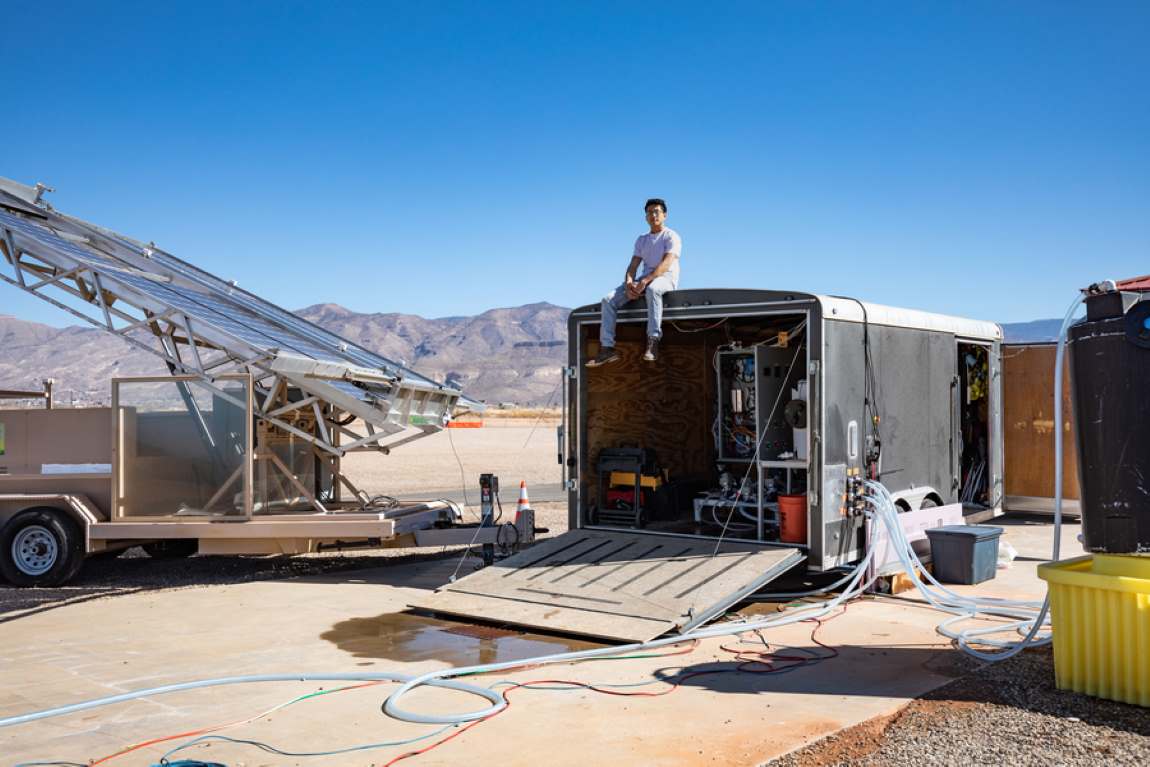In a major breakthrough for sustainable desalination, engineers at the Massachusetts Institute of Technology (MIT) have created a solar-powered system that removes salt from water by adapting its output directly to fluctuations in sunlight, eliminating the need for additional battery storage.
This innovative system promises to deliver a reliable supply of clean water to communities without access to fresh groundwater or consistent grid power, particularly in remote or low-income areas.
The new system, designed by a team led by Amos Winter, Germeshausen Professor of Mechanical Engineering at MIT, operates by aligning its desalination rate to the amount of sunlight available throughout the day.

As the sun rises and falls or becomes obstructed by clouds, the system automatically adjusts its operation, ramping up or down depending on the intensity of sunlight. This unique capability maximizes the use of available solar energy, allowing it to operate with 94% efficiency and produce up to 5,000 liters of clean water per day.
“Conventional desalination technologies require steady power and need battery storage to smooth out a variable power source like solar,” explains Winter. “By continually varying power consumption in sync with the sun, our technology directly and efficiently uses solar power to make water.”
The system specifically targets brackish groundwater – a common but often unusable water source due to its salt content. MIT engineers see it as a promising solution for inland communities located far from the coast, where seawater desalination is impractical. These areas often rely on groundwater, which is increasingly becoming saline due to climate change.
Jonathan Bessette, an MIT PhD student in mechanical engineering and a co-author of the study, highlights the urgency of this issue: “The majority of the population actually lives far enough from the coast, that seawater desalination could never reach them. They consequently rely heavily on groundwater, especially in remote, low-income regions. And unfortunately, this groundwater is becoming more and more saline due to climate change.”
The MIT team’s innovation centers on electrodialysis, a desalination process that uses an electric field to separate salt ions from water. Unlike reverse osmosis, which requires consistent pressure and power, electrodialysis can adapt to the variable power generated by renewable sources. In previous iterations of their design, the engineers found that intermittent sunlight required battery backup to smooth out power fluctuations. However, their latest system uses a fast-response control method, allowing it to adjust its desalination rate three to five times per second, based on real-time solar output.
This control strategy, called “flow-commanded current control,” senses incoming solar power and commands the system to increase water flow and current through the electrodialysis stack. In effect, the system uses only the power available from the sun at any given moment, making it possible to operate continuously throughout the day without the need for stored energy.
Over six months of testing at the Brackish Groundwater National Research Facility in New Mexico, the system proved highly effective under a variety of solar conditions, consistently converting over 94% of the electrical energy generated by its solar panels into desalination power. This capability translates into nearly 100% reduction in battery dependency.
“We cut our required battery capacity by almost 100 percent,” says Winter, “compared to how you would traditionally design a solar desal system.”
With successful field tests under its belt, the MIT team is now looking to scale up the system for broader use. They plan to continue testing in different locations and configurations, with an eye toward eventually supplying larger communities, even entire municipalities, with affordable, sustainable drinking water.
MIT researchers believe their solar-powered desalination system could be a game-changer for communities around the world that struggle with access to safe drinking water. The team is also planning to launch a company to bring this technology to market, aiming to support a diverse range of regions and water needs.
Shane Pratt, another co-author, underscores the team’s goals: “Our focus now is on testing, maximizing reliability, and building out a product line that can provide desalinated water using renewables to multiple markets around the world.”
***
This research was partially funded by the National Science Foundation, with additional support from the Julia Burke Foundation and the MIT Morningside Academy of Design, as well as in-kind contributions from Veolia Water Technologies and Solutions and Xylem Goulds.
Journal Reference:
Bessette, J.TY., Pratt, S.R. & Winter V, A.G., ‘Direct-drive photovoltaic electrodialysis via flow-commanded current control’, Nature Water (2024). DOI: 10.1038/s44221-024-00314-6
Article Source:
Press Release/Material by Massachusetts Institute of Technology (MIT)
Featured image: Jon Bessette sits atop a trailer housing the electrodialysis desalination system at the Brackish Groundwater National Research Facility (BGNDRF) in Alamogordo, New Mexico. The system is connected to real groundwater, water tanks, and solar panels Credit: Shane Pratt | CC BY-NC-ND 4.0




